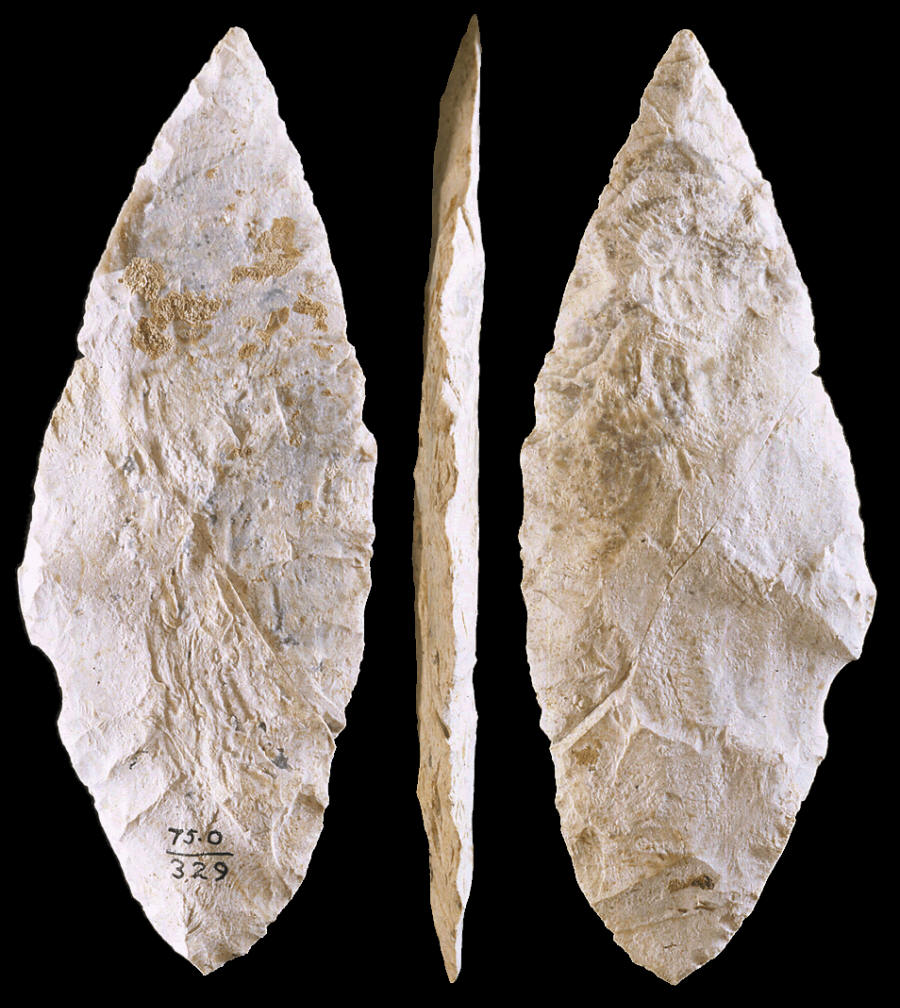|
SOLUTREAN
LAUREL-
This laurel-leaf point was found on the Le Ruth rock shelter site on
the Vezere River in southwestern France. The Solutrean industry is
characterized by several different forms of thin bifaces that have
been found on sites in France, Spain and Portugal. Some of the
smaller bifaces were hafted onto the ends of spears or darts. Larger
laurel-leaf points were used as knives and were probably hafted onto
short handles. The largest and most skillfully made bifaces, such as
those found in the Volgu cache, were probably used for some type of
ritual purpose.
|
